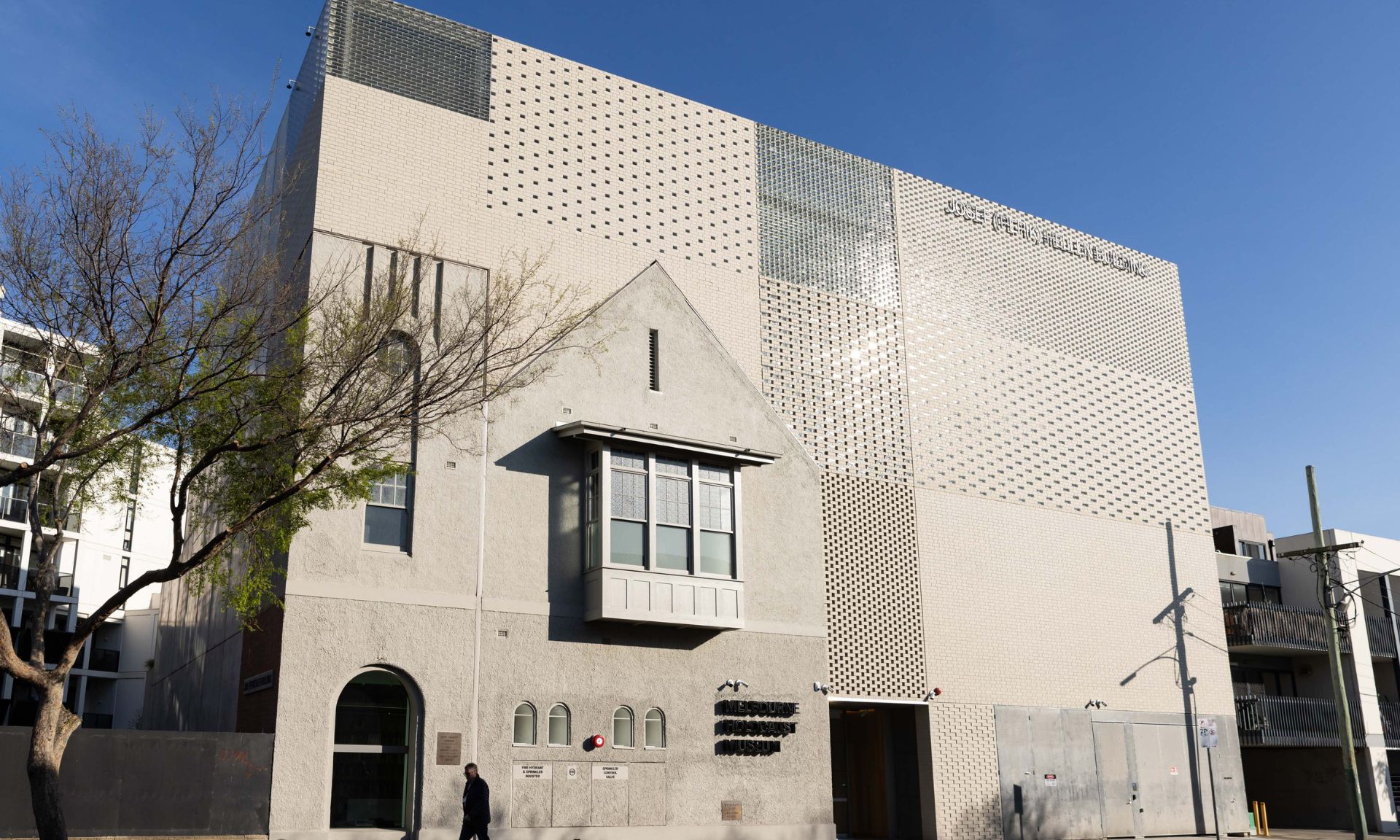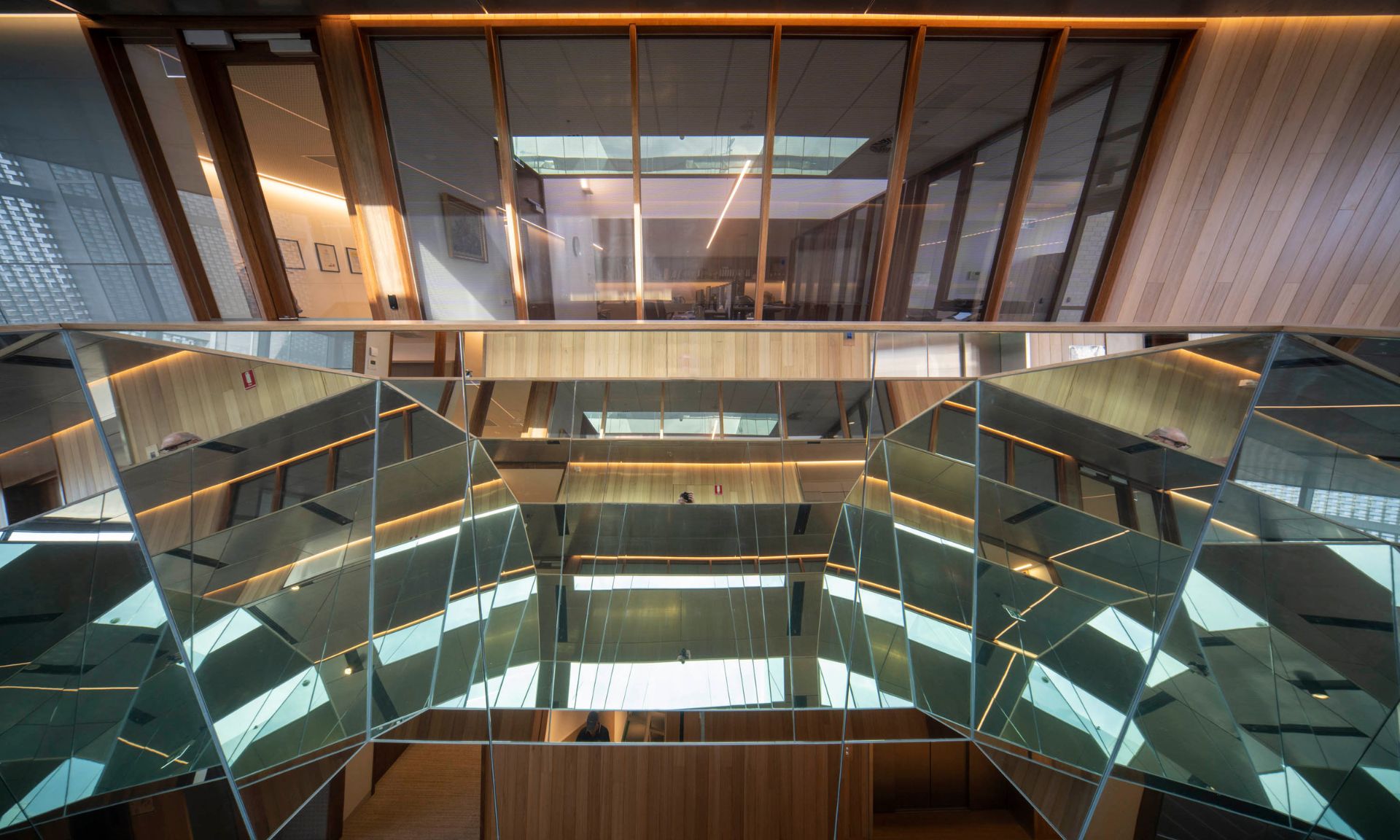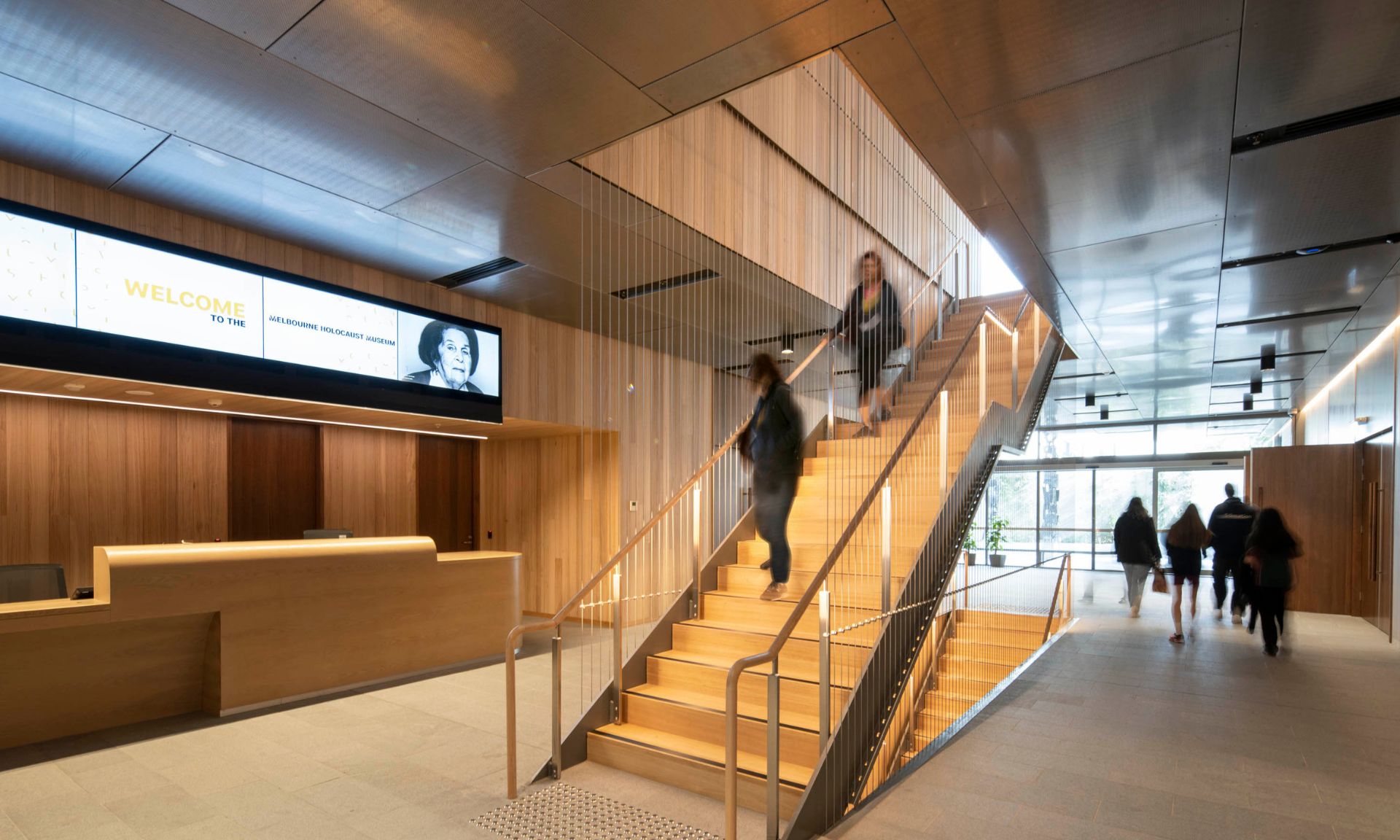Can you reflect on a personal favourite space in the realised building?
The central public circulation spine which encompasses the stairs, circulation and breakout areas which links all levels and the MHM’s various activities.
This space is designed to provide some relief for visitors more affected by the difficult museum content. At the western end are views towards either the courtyard, garden terraces or the bay. At the eastern end the beautiful play of light through the glass brick screen and birch trees. These views out combined with the skylights, the use of mirror in them, and other reveals, reflect the world – the sky, clouds, rooftops of nearby house – outside to remind visitors of their location, in time and place, situate them here in contemporary Melbourne. Together, these devices bring outside in to help bring people back from the difficult worlds and histories they have encountered and engaged with in the museum spaces.
How will this building stand out in Melbourne’s cultural landscape?
MHM will act as a beacon of hope. Within Elsternwick, it will be a valued community asset and place of gathering, and on Selwyn Street, especially at night, it will glow from within celebrating life. Strong and delicate, secure and open, the new MHM is built of substantial and enduring materials appropriate to the significance of this museum within Melbourne’s cultural landscape.
We also extend our deepest thanks to the following KTA team for their work on our new building:
Martin Allen
Anne-Claire Deville
Scott Diener
Darcy Dunn
Lauren Garner
Thomas Huntingford
Claire Humphreys
Paul Lau
Kelley Mackay
Leonardo Meister
Sophie Nicholaou
Tamsin O’Reilly
Ben Pakulsky
Karina Piper
Jasmine Placentino
Toby Pond
Leo Showell
Hilary Sleigh
Kerstin Thompson




